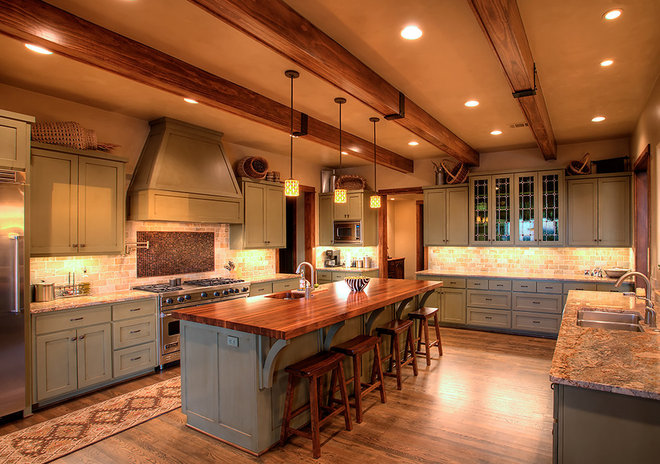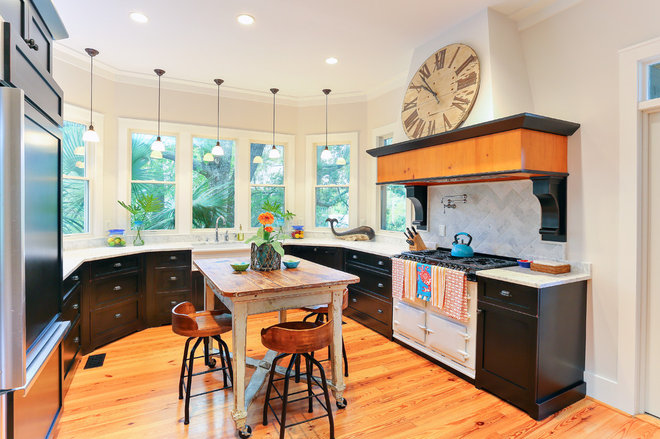Wood. Hand-carved or premade wood corbels are commonly used in kitchens. They enhance the cabinet design when they match the finish of the cabinets.
Cabinets: custom, Walker Woodworking
Cabinets: custom, Unico Design Cabinetry
Cabinets: custom, Highline Cabinets
Backsplash: Red Hot Mama Satchmo Sticks, Artistic Tile
Kitchen islands. One of the main functions of corbels is to add detail. And if kitchens are the hub of the home, then islands are the hot spot for detail. Corbels are most often incorporated at the ends of the island or underneath a countertop overhang. Transform your island into a furniture-style piece by combining detailed corbels with wainscot panels and decorative legs.
This rustic eat-in kitchen has traditional wooden brackets supporting the island’s butcher block countertop. Using corbels in lieu of metal brackets is a good way to ensure that your island design stays decorative.
Corbels: custom, Trish Namm, Kent Kitchen Works
Cabinet paint: Ivory White 925, Benjamin Moore
Chandelier: Bling, Robert Abbey
Cabinets: custom, Wilson AC & Appliance
Cabinets: custom, Wood Works Fine Custom Cabinetry Inc.


























Leave a comment